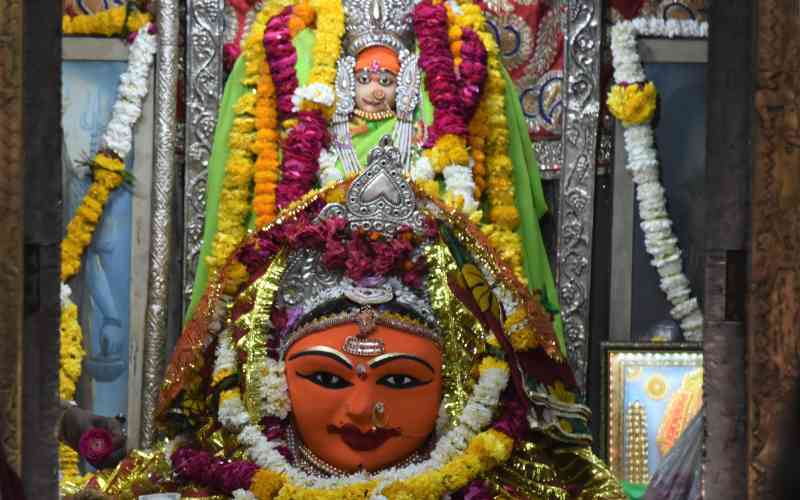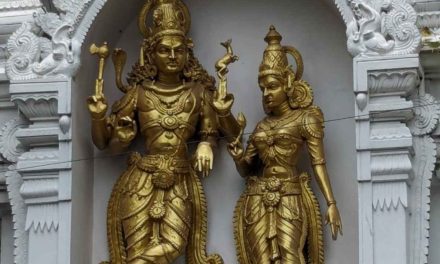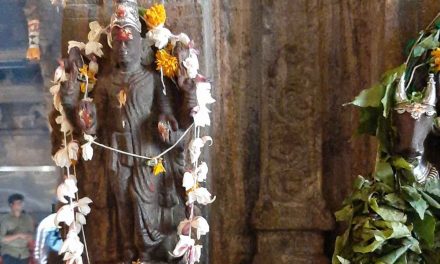Shakta Tantrism is a branch of Hinduism that worships the Goddess Shakti as the supreme power and reality of the universe. ¹ Shakti, also known as Tripura Sundari, is the feminine aspect of the divine, who manifests in various forms and names. ² Shakta Tantrism is based on the principle of the ritual sublimation of natural impulses to achieve spiritual liberation and union with the Goddess. ²
One of the important texts of Shakta Tantrism is the Tripura Upanishad, a minor Upanishad attached to the Rigveda. ³ The Tripura Upanishad presents the philosophy and practice of Shakta Tantrism in 16 verses, covering topics such as the nature of Shakti, the symbolism of Tripura, the Srividya yantra, the mantra and meditation techniques, and the ethical and social doctrines. ⁴ The Tripura Upanishad is considered as “as close to an introduction to Shakta Tantrism as we may find”, according to Douglas Brooks. ⁵
In this blog post, we will explore some of the key concepts and teachings of the Tripura Upanishad and how they can help us understand and appreciate Shakta Tantrism.
The nature of Shakti
The Tripura Upanishad begins by declaring that Shakti is the ultimate reality and consciousness, beyond Brahma, Vishnu, and Shiva. ⁶ She is the source of all creation, preservation, and destruction, and she pervades everything as her own self. ⁷ She is also the supreme bliss and knowledge, who bestows grace and liberation to her devotees.
Shakti is not only a goddess, but also a cosmic energy that can be experienced within oneself. The Tripura Upanishad states that Shakti resides in the heart of every being, as the innermost self or atman. She can be awakened and realized through various methods of yoga, such as breath control, concentration, visualization, mantra recitation, and meditation.
The symbolism of Tripura
The name Tripura means “three cities” or “three levels”, and it refers to the three aspects of Shakti that correspond to the three states of consciousness: waking, dreaming, and deep sleep. These three states are also associated with three gunas or qualities: sattva (purity), rajas (activity), and tamas (inertia).
The Tripura Upanishad teaches that one can transcend these three states and gunas by realizing the fourth state of consciousness, called turiya or “the fourth”. This is the state of pure awareness, beyond all duality and distinction. This is also the state of Shakti herself, who is beyond all names and forms.
The symbol of Tripura is also represented by a geometric diagram called Srividya yantra or “the diagram of auspicious knowledge”. This yantra consists of nine interlocking triangles that form 43 smaller triangles around a central point called bindu. The triangles represent the dynamic aspect of Shakti, while the bindu represents her static aspect. The yantra also contains various other symbols such as lotus petals, circles, and squares that represent different aspects of creation and manifestation.
The Srividya yantra is used as a tool for meditation and worship in Shakta Tantrism. By contemplating on its meaning and structure, one can invoke and experience the presence and power of Shakti within oneself. The yantra also serves as a map for a spiritual journey, from the outermost layer to the innermost core.
The mantra and meditation techniques
The Tripura Upanishad also prescribes a mantra for invoking and meditating on Shakti. The mantra is:
ॐ ह्रीं श्रीं क्लीं ऐं सौः ॐ ह्रीं क ए ई ल ह्रीं ह स क ह ल ह्रीं स क ल ह्रीं सौः ऐं क्लीं ह्रीं श्रीं ॐ
Om hrim srim klim aim sauh om hrim ka e i la hrim ha sa ka ha la hrim sa ka la hrim sauh aim klim hrim srim om
This mantra is composed of various syllables that have different meanings and vibrations. The syllables are arranged in a specific order that corresponds to the Srividya yantra and the levels of consciousness. The mantra is also known as Panchadasi or “the fifteen-syllable mantra”, as it has fifteen main syllables that form the core of the mantra.
The Tripura Upanishad explains how to recite and meditate on this mantra in a systematic way. The mantra is divided into three parts: the head, the body and the tail. The head consists of the syllables om, hrim, srim, klim, aim and sauh. The body consists of the syllables ka, e, i, la, hrim, ha, sa, ka, ha, la and hrim. The tail consists of the syllables sa, ka, la, hrim, sauh, aim, klim, hrim and srim.
The head of the mantra represents the causal state of consciousness, where Shakti is one with Brahman, the supreme reality. The body of the mantra represents the subtle state of consciousness, where Shakti manifests as various powers and energies. The tail of the mantra represents the gross state of consciousness, where Shakti appears as the physical world and its objects.
The Tripura Upanishad instructs the practitioner to recite and meditate on each part of the mantra separately, starting from the tail and moving upwards to the head. By doing so, one can gradually ascend from the gross to the subtle to the causal state of consciousness, and ultimately reach the fourth state of turiya, where Shakti reveals herself as one’s own self.
The ethical and social doctrines
The Tripura Upanishad also lays down some ethical and social guidelines for those who follow Shakta Tantrism. The Upanishad states that one should practice non-violence, truthfulness, purity, compassion, generosity, and self-control. One should also respect all beings as manifestations of Shakti and avoid harming or exploiting them. One should also worship Shakti in various forms and names, such as Durga, Kali, Lakshmi, Saraswati, and others.
The Tripura Upanishad also emphasizes the importance of having a guru or a spiritual teacher who can guide and initiate one into Shakta Tantrism. The guru is considered a representative of Shakti who can impart her grace and knowledge to the disciple. The disciple should serve and obey the guru with devotion and gratitude. The disciple should also follow the instructions and rituals given by the guru faithfully and diligently.
The Tripura Upanishad also acknowledges the role of women in Shakta Tantrism. Women are regarded as embodiments of Shakti who can inspire and elevate men to higher levels of consciousness. Women are also given equal rights and opportunities to study and practice Shakta Tantrism. The Upanishad also advocates for a harmonious relationship between men and women based on mutual respect and love.
Conclusion
The Tripura Upanishad is a valuable source of information and inspiration for those who are interested in Shakta Tantrism. It offers a concise and comprehensive introduction to the philosophy and practice of this branch of Hinduism that celebrates Shakti as the supreme power and reality of the universe. By studying and following the teachings of this Upanishad, one can hope to attain spiritual liberation and union with Shakti.
Works Cited:
(1) Tantrism – Encyclopedia Britannica. https://www.britannica.com/topic/Hinduism/Tantrism
(2) Hinduism – Tantrism, Shaktism, & Ramakrishna | Britannica. https://www.britannica.com/topic/Hinduism/Tantric-ritual-and-magical-practices
(3) Shaktism – Wikipedia. https://en.wikipedia.org/wiki/Shaktism
(4) Hinduism – Tantrism, Mantras, Hatha-yoga, and Shaktism. https://www.britannica.com/topic/Hinduism/Nature-of-Tantric-tradition
(5) Tripura Upanishad – Wikipedia. https://en.wikipedia.org/wiki/Tripura_Upanishad
(6) Tripura Upanishad – Vyasa Mahabharata. https://www.vyasaonline.com/tripura-upanishad/
(7) Tripuratapini Upanishad – Wikipedia. https://en.wikipedia.org/wiki/Tripuratapini_Upanishad





